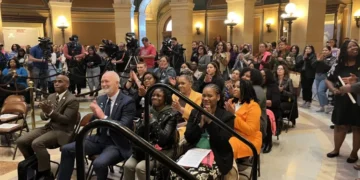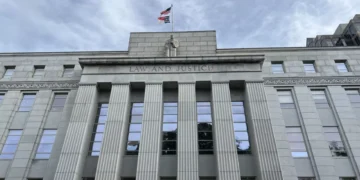Oct 4, 2024 Story by: Editor
Christian Lynch has a deep love for Baltimore. He frequently attends concerts, dines at local restaurants, and spends time with friends in Charm City. However, he and his wife moved to Owings Mills last year, finding a more affordable home and a calmer environment for their reactive dog, who “was triggered by everything” in the city.
Lynch is just one of the many Black residents who left Baltimore in 2023. According to the Census Bureau’s 2023 American Community Survey, the city’s non-Hispanic Black population declined by 11,600 last year, though it’s unclear how many moved away versus those who passed away. The overall population of Baltimore decreased by nearly 5,000, despite an increase in the number of households. The city now has a population of 565,239, with 247,232 households.
This trend of Black residents leaving Baltimore has continued for over a decade, with a Baltimore Banner analysis of U.S. Census Bureau data revealing that the city lost around 57,000 non-Hispanic Black residents between 2010 and 2020. During that same period, more Black than white residents left the city.
Former residents cite various reasons for moving, with crime concerns present but not as a top factor. Instead, affordability, high property taxes, the need for more space, and better schools were at the forefront of their decisions.
Many of those who left still hold a strong connection to the city, regularly visiting for social events. “The Black people I know go back to the city. It’s not like they are leaving and staying away,” said Lynch.
Baltimore Mayor Brandon Scott expressed concern about the ongoing loss of Black residents, stating in an email that it is a “top concern” for the city. He highlighted the need to strengthen economic development, improve access to homeownership, and create opportunities in Baltimore. “We want to do it in a way that honors Baltimoreans who have always lived here, that encourages potential new residents to discover what makes Baltimore special, and that responsibly addresses Baltimore’s challenges and makes us competitive with our neighboring counties,” Scott said. “We’re seeing a lot of success in that space and believe that over time, the trends we’ve seen for decades will begin to reverse.”
Tershea Rice, the chief operations officer of the Greater Baltimore Urban League, echoed concerns about the population decline. The league, which celebrates its 100th anniversary this year, sees the census findings as a “huge concern.” “It’s altering the city’s demographics. It affects the city’s economy and the political landscape,” Rice said. “Communities no longer look the same as they did before.”
Rice believes that issues such as crime, safety, education, and employment, which contribute to residents leaving, can be addressed by collaboration between the city, state, nonprofits, and large companies. “We can all do our part in changing that so that we can keep residents here and make people who were born here — like myself — come back,” she said.
Adam Rouse and his wife are another example of residents who moved out of the city. They once enjoyed living in Fells Point, close to restaurants and nightlife. However, with a second child on the way, they realized their waterfront apartment wasn’t ideal for their growing family. “Friday nights at 1 in the morning was fine when we had [our] first baby,” Rouse said. “But when we had the second, we were like, we need to have some peace and quiet.”
Rouse initially looked at moving to Howard County for its schools but found the cost prohibitive. “Trying to get in there was trading at a premium,” he explained. Eventually, they found a home in Baltimore County that met their needs, and they pay less than half the property taxes they would for a similarly priced home in the city. “We live a few miles from the city line,” Rouse said. “The tax situation would be entirely different.”
For Lynch, cost was also the primary reason for leaving Baltimore. “A lot of people have been priced out of the city,” he noted. He now lives in a 1,100-square-foot, two-bedroom apartment for $2,070 a month. In neighborhoods like Canton, a 500-square-foot apartment would cost him around $2,000. However, Lynch misses the cultural activities and sense of community found in the city. “In Owings Mills, which is more isolated, it is quieter. But there are less community events,” he said.
Nazirah Muhammad, a Baltimore native, moved for safety, more green space, and a slower pace of life. “Not having those things really impacted my decision in moving away,” Muhammad said. “Also, with the increase in delinquent/youth crimes, I just wanted what I felt was better for my family.” Now living in Randallstown since 2021 with her husband and three children, Muhammad enjoys her large backyard and quieter lifestyle, though she misses the proximity to her family in Baltimore. “I don’t miss that lingering fear of ‘could something happen to myself or family members,’” she said. “I don’t want to say it’s a lost cause.”
Muhammad is also concerned about the impact of declining Black residents on Baltimore’s culture. The city has long been a hub for Black-owned businesses and entrepreneurs, from historic catering businesses to modern brands like Oyin Handmade and Slutty Vegan. “There are a lot of great small Black businesses,” Muhammad said. “Having that hub is really influential in the city. It’s great for the Black youth in the city to see those businesses thrive.” Source: The Baltimore Banner

















